Experimenting with inflatable fashion seems to be a growing trend among emerging designers. Many of them have begun to question the physical standards that have long been stereotyped in fashion. Showing balloon-like garments on the runway they play with proportions and exaggerate the silhouettes with literally nothing but air.
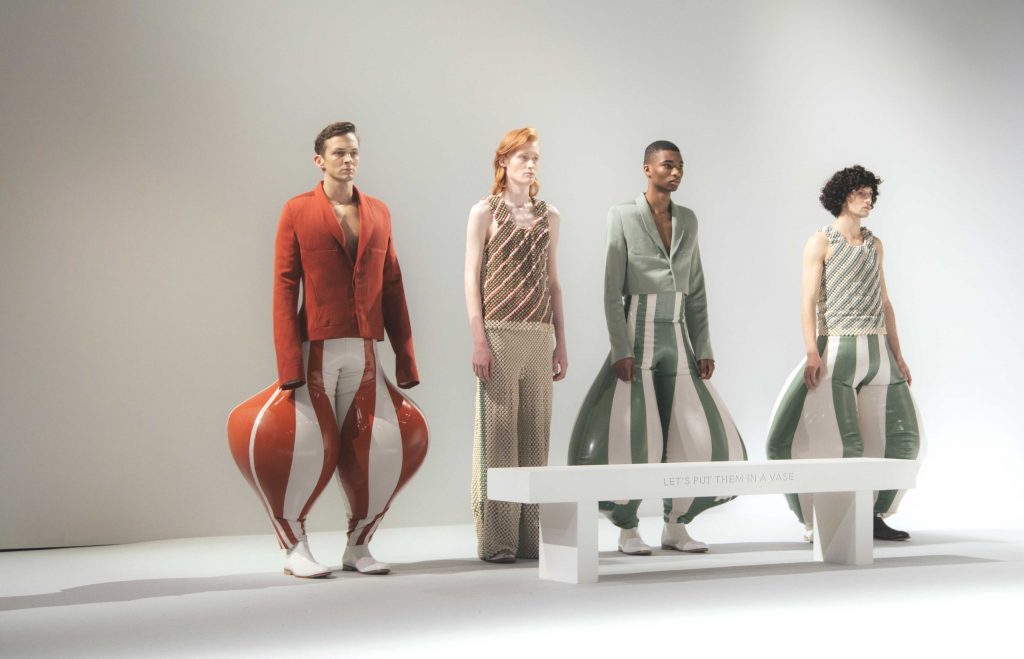
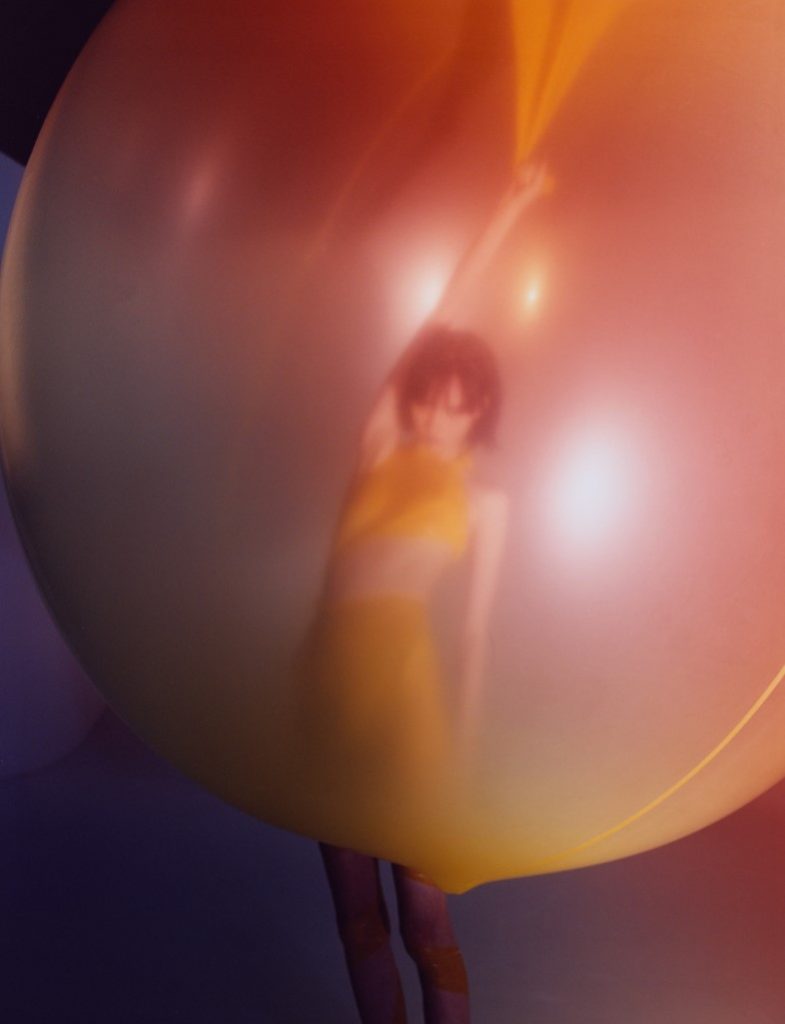
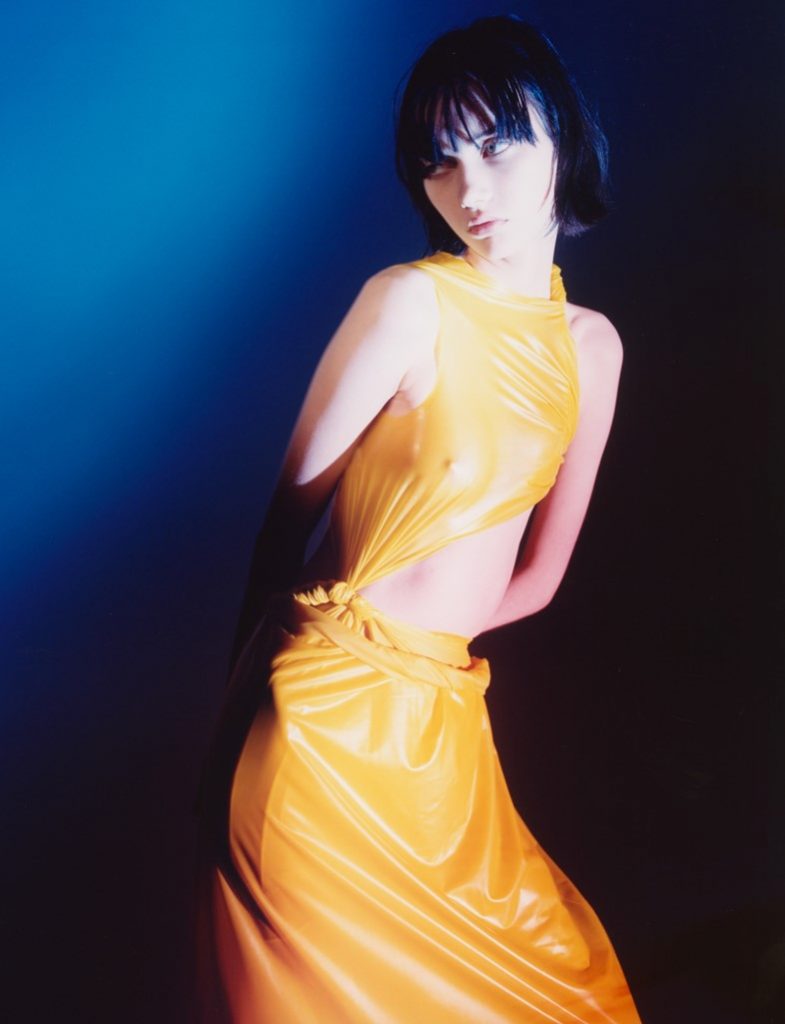
Moments of Clarity by Fredrik Tjaerandsen
Central Saint Martins fashion student Fredrik Tjaerandsen has designed a line of inflatable spheres made from natural rubber that deflate to form dresses and skirts. Titled Moments of Clarity, the collection consists of eight looks, each featuring a balloon element with a simple valve. The valve lets the models walking the runway control the air-flow of the piece and dive out of the top of the balloon.
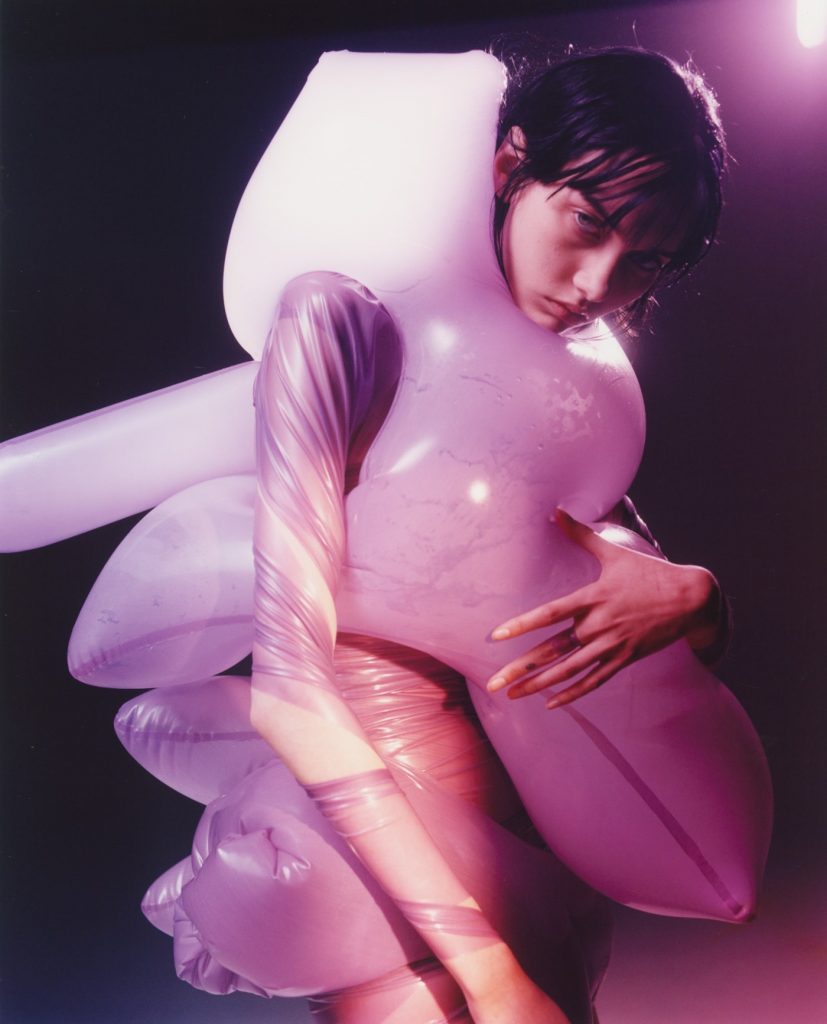
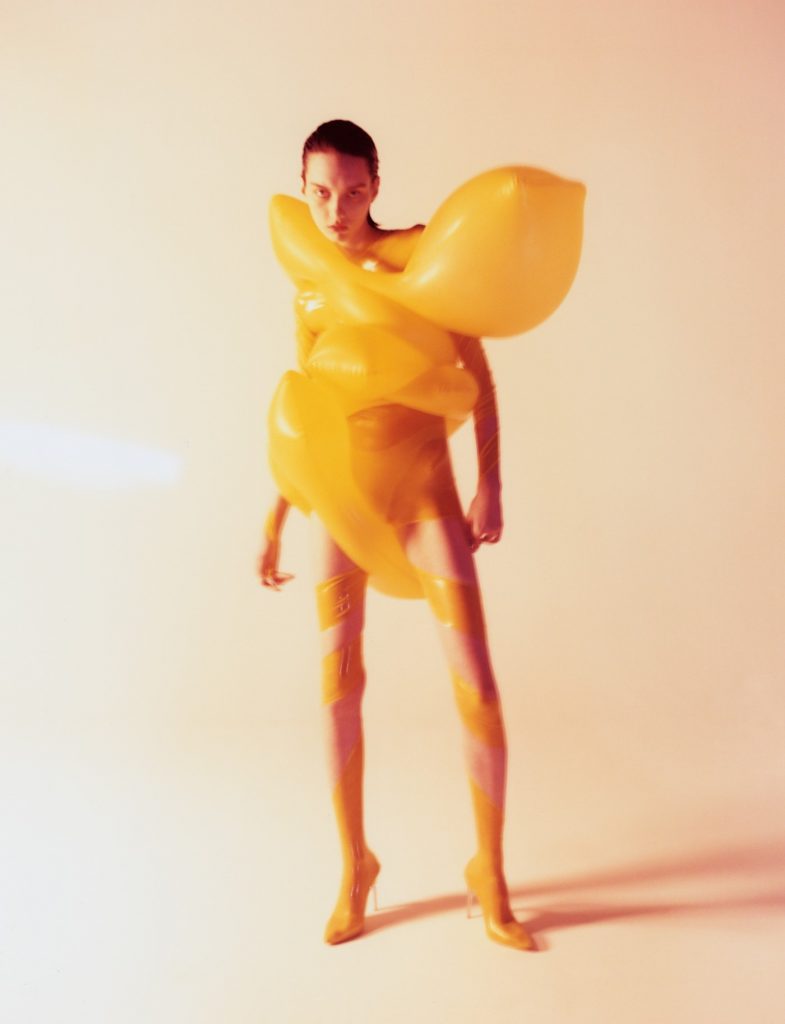

Moments of Clarity by Fredrik Tjaerandsen
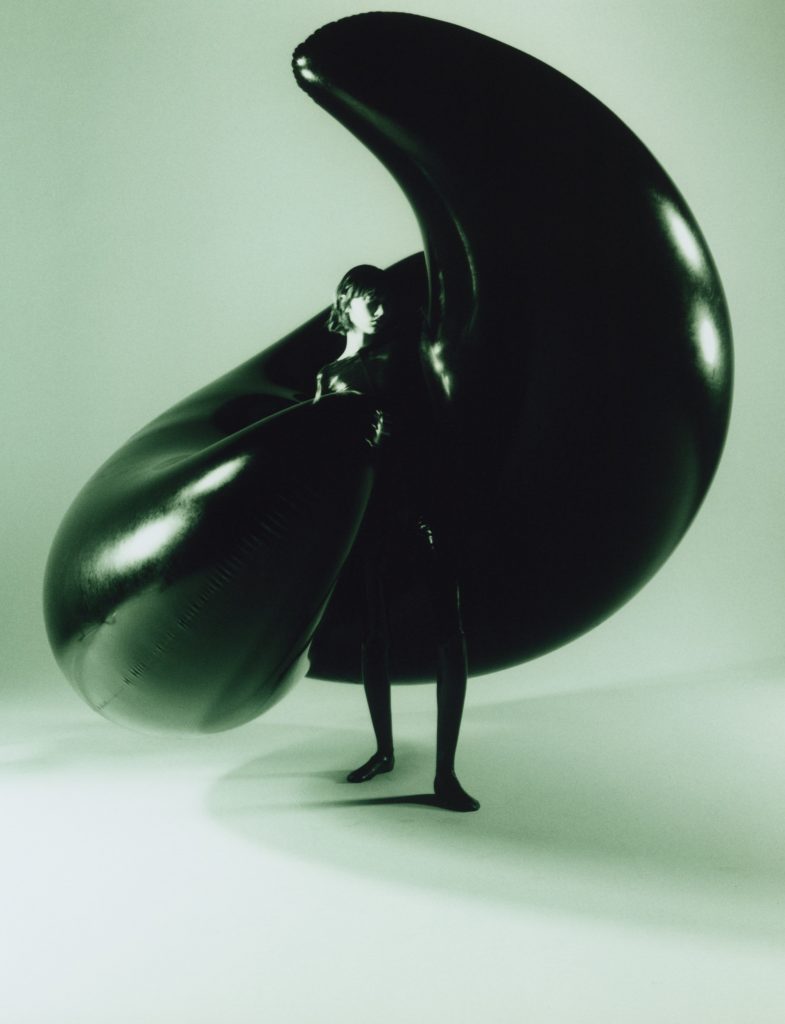
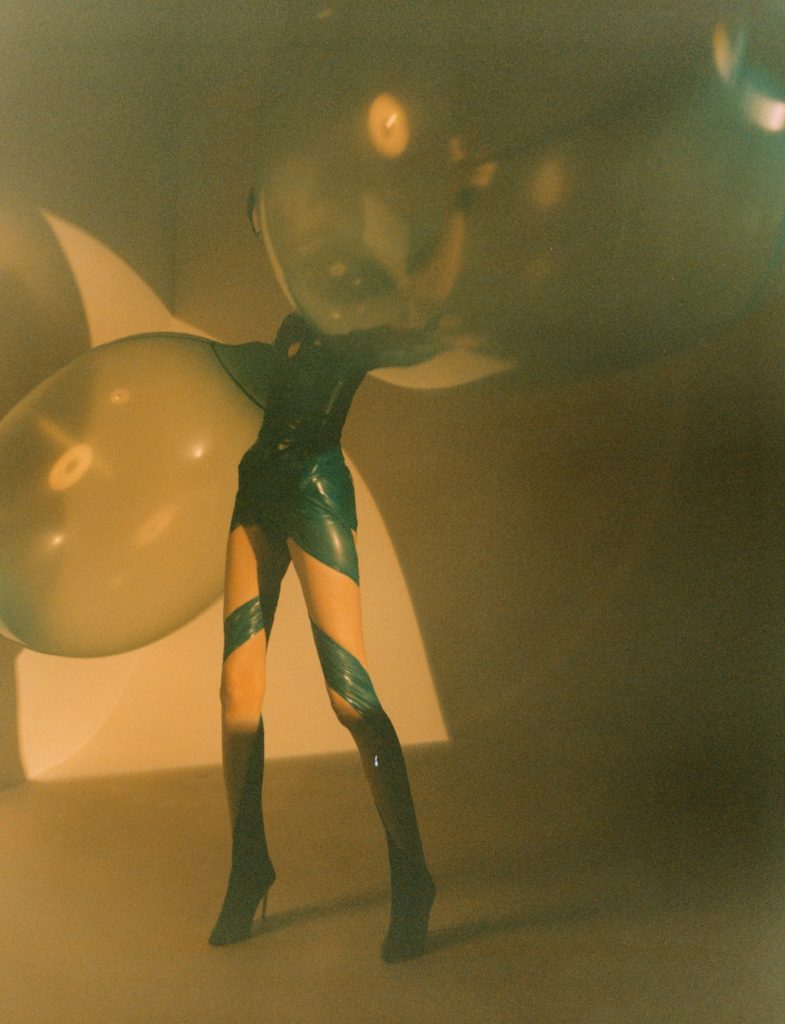
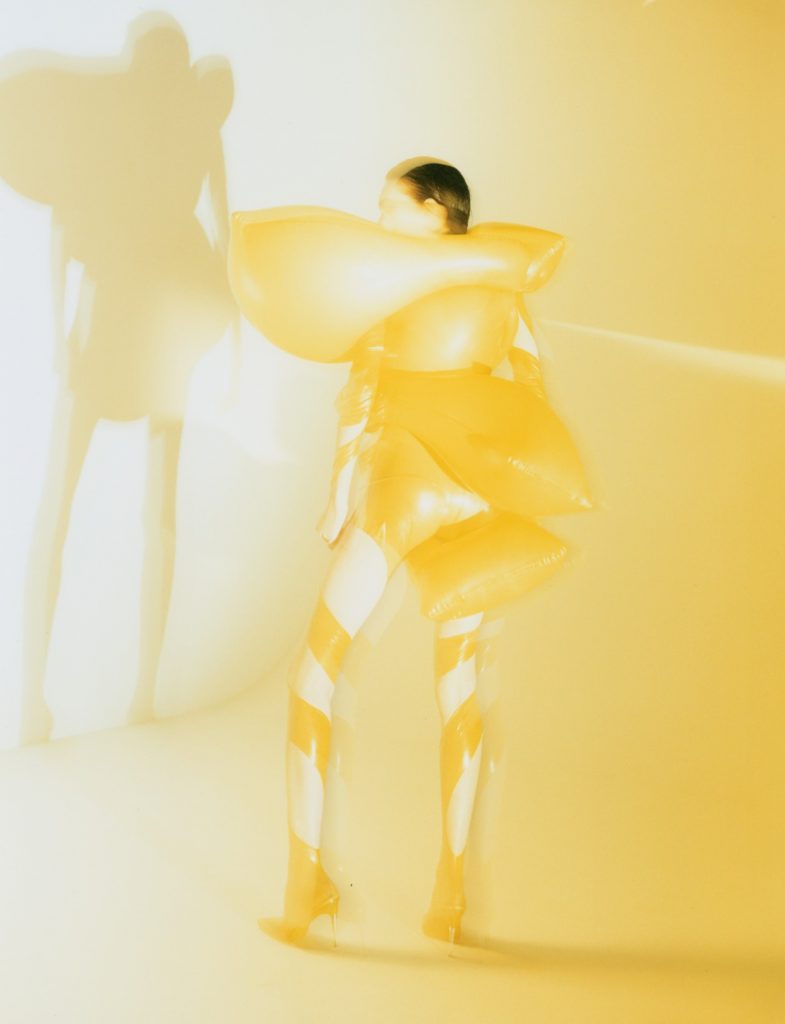
Moments of Clarity by Fredrik Tjaerandsen
Each dress encompasses a torus-shaped structure. The inner part of the torus is where the garment is constructed and inverts out to the bubble. Before the show, Tjaerandsen inflated each piece, filling them with two to three thousand litres of oxygen. While the smaller bubbles took 10 minutes, the biggest one took about 1 hour. The rubber used in the balloons was sourced from Sri Lankan suppliers that support and buy the material from local growers.
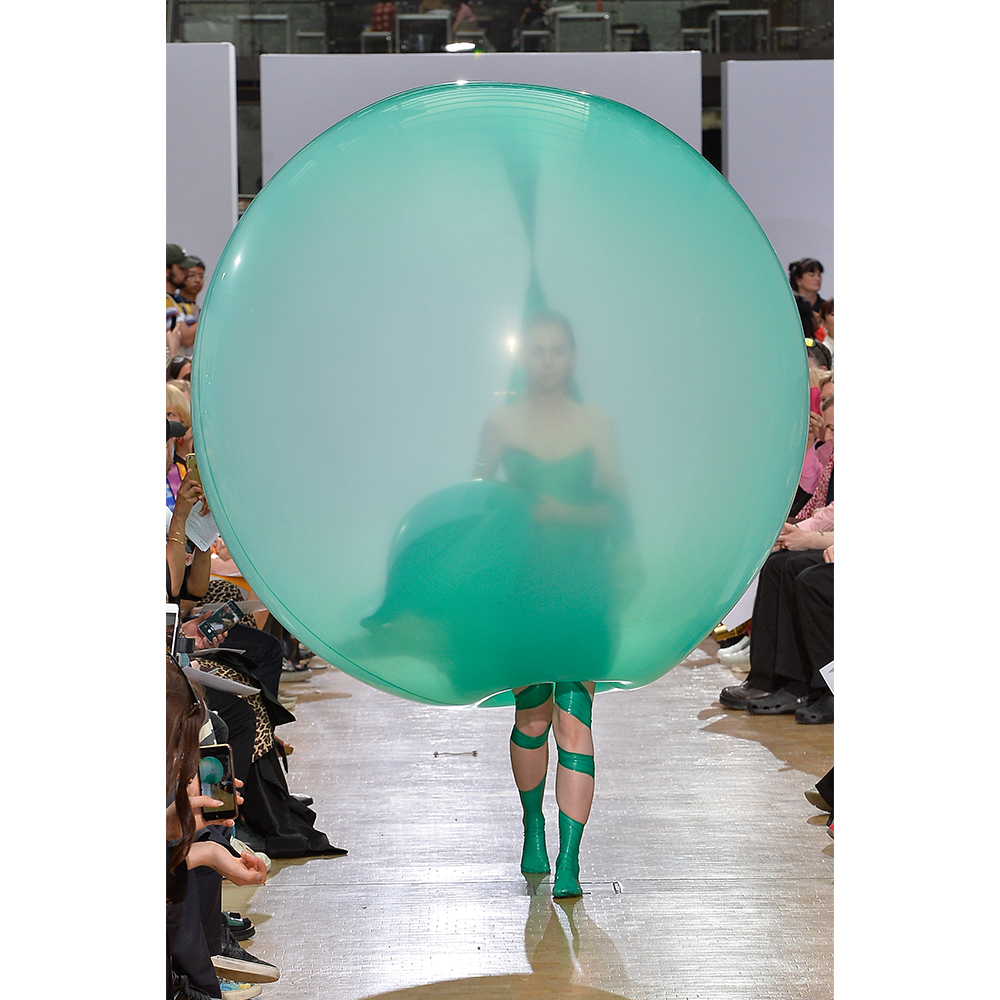
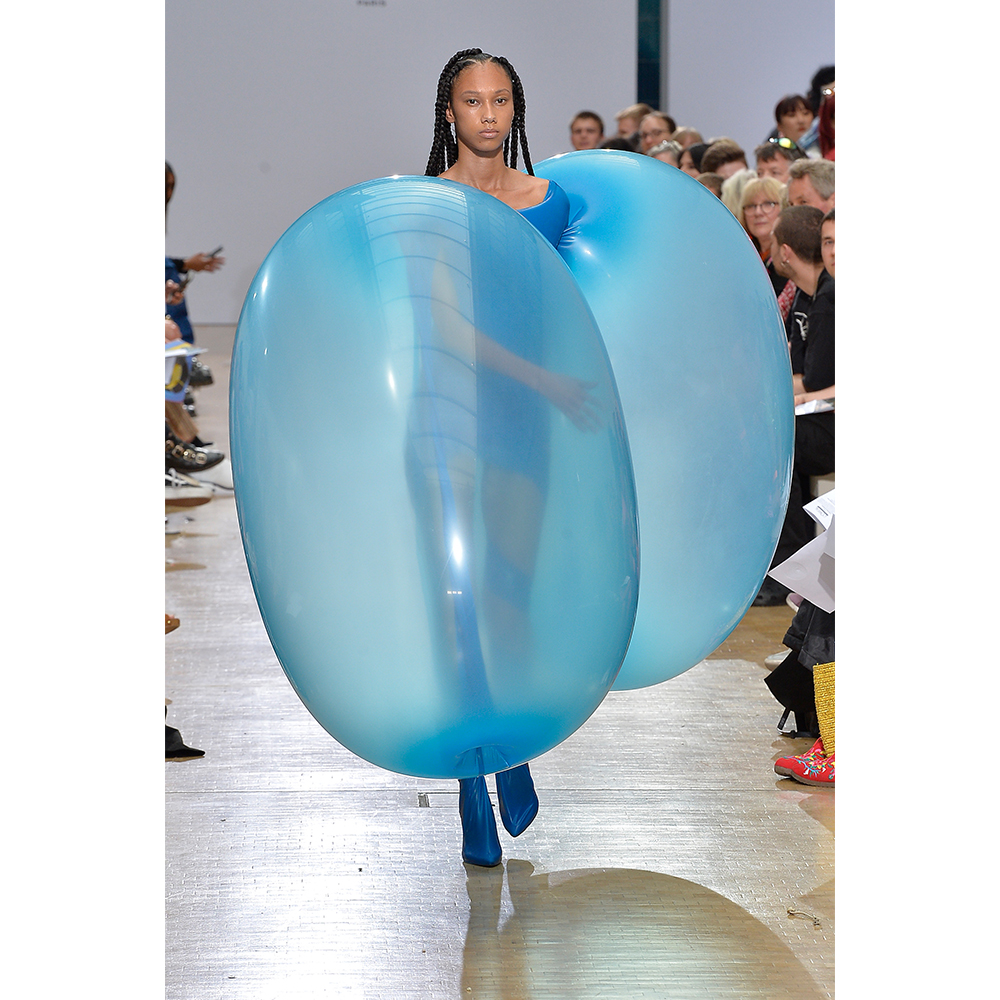
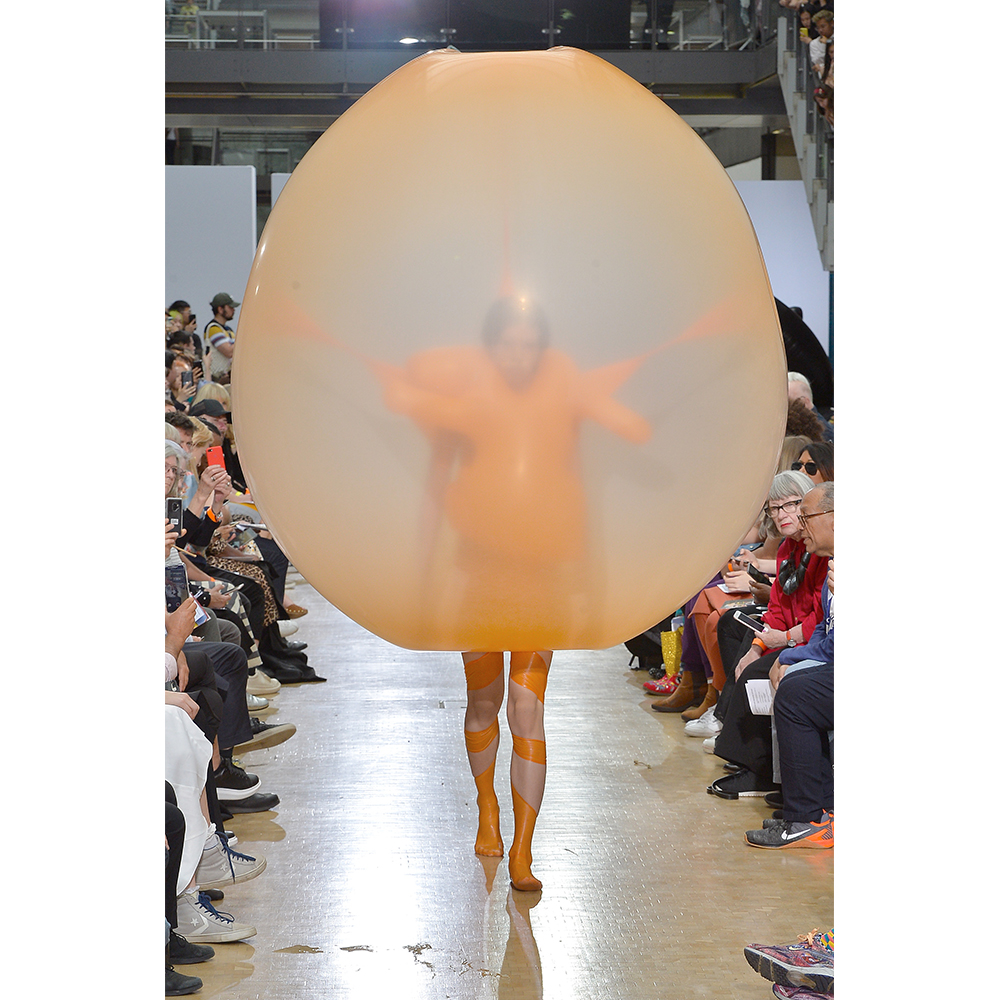
Moments of Clarity by Fredrik Tjaerandsen
According to the designer, the collection is informed by an almost indefinable moment when a human’s self-awareness becomes active and sentiment.
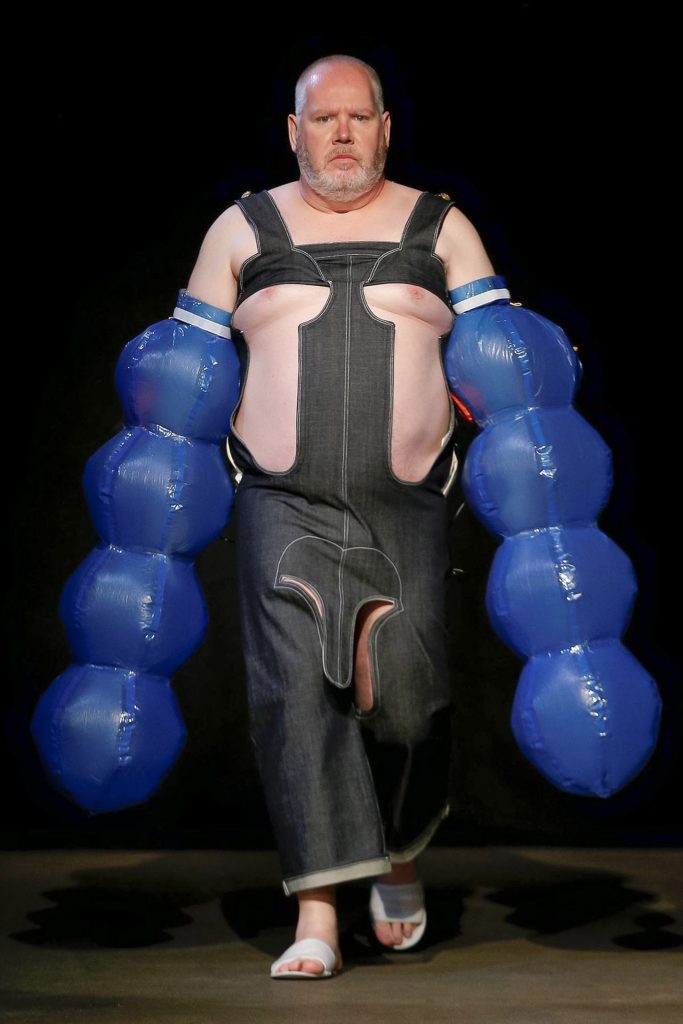
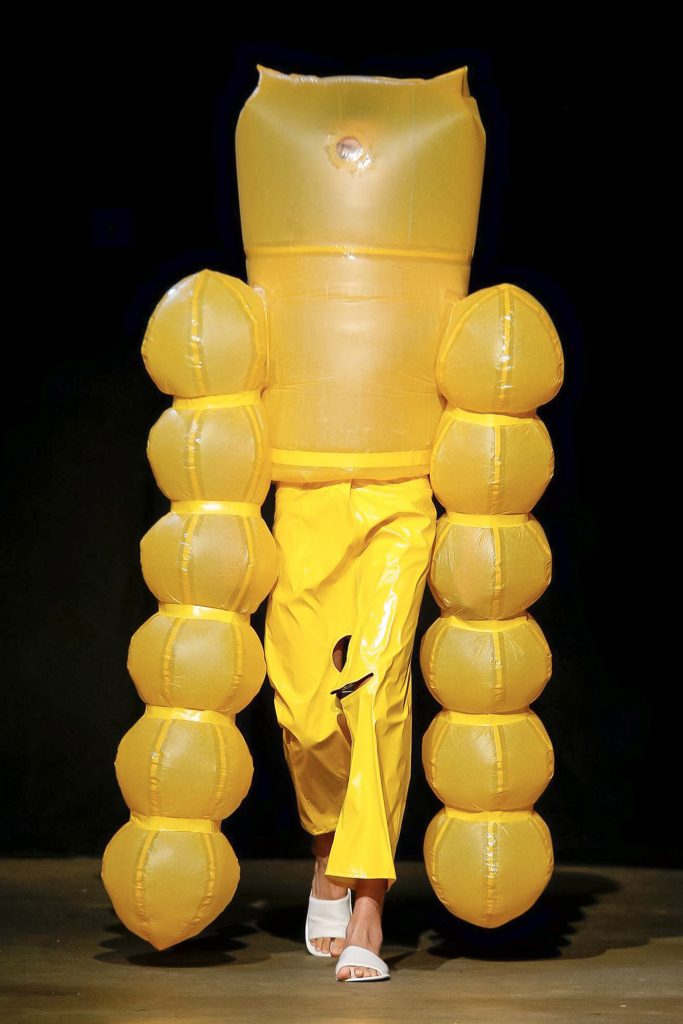
Freud-inspired collection by San Kim
Graduate fashion collection of inflatable garments by University of Westminster student San Kim is inspired by Freudian theories of psychosexual development, the main point of which is that children’s behaviour consists of a repetition of pleasing behavior that then reappears in adult’s sexual behaviours. In search of a medium that would allow him to combine this idea of a child’s playfulness and an adult’s fetish, the fashion student discovered that an inflatable fetish was the most effective way to show both characteristics.
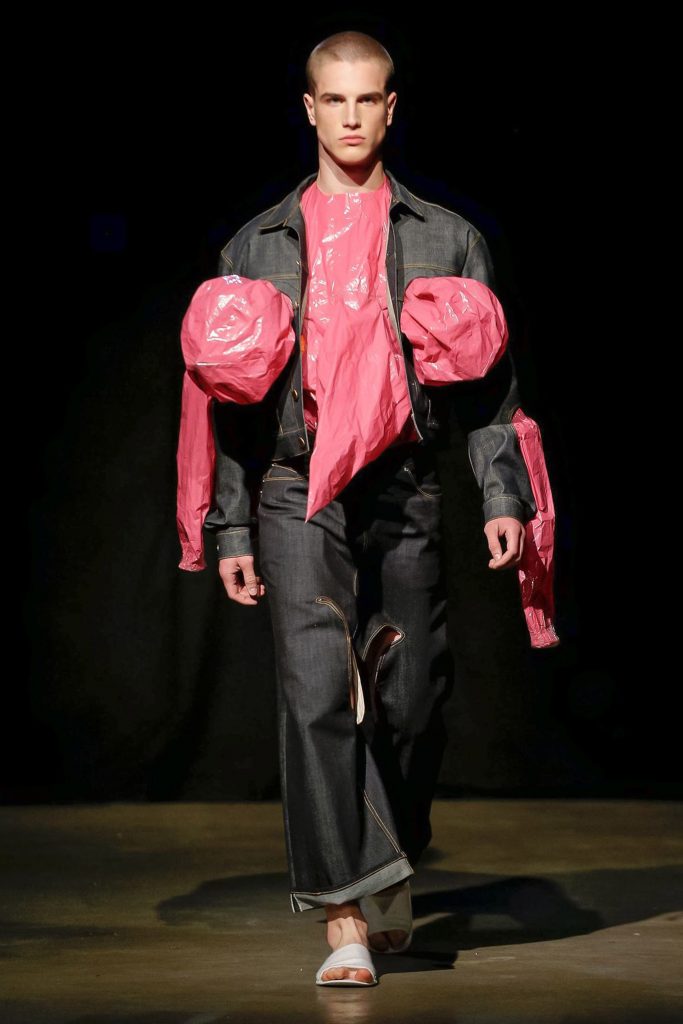
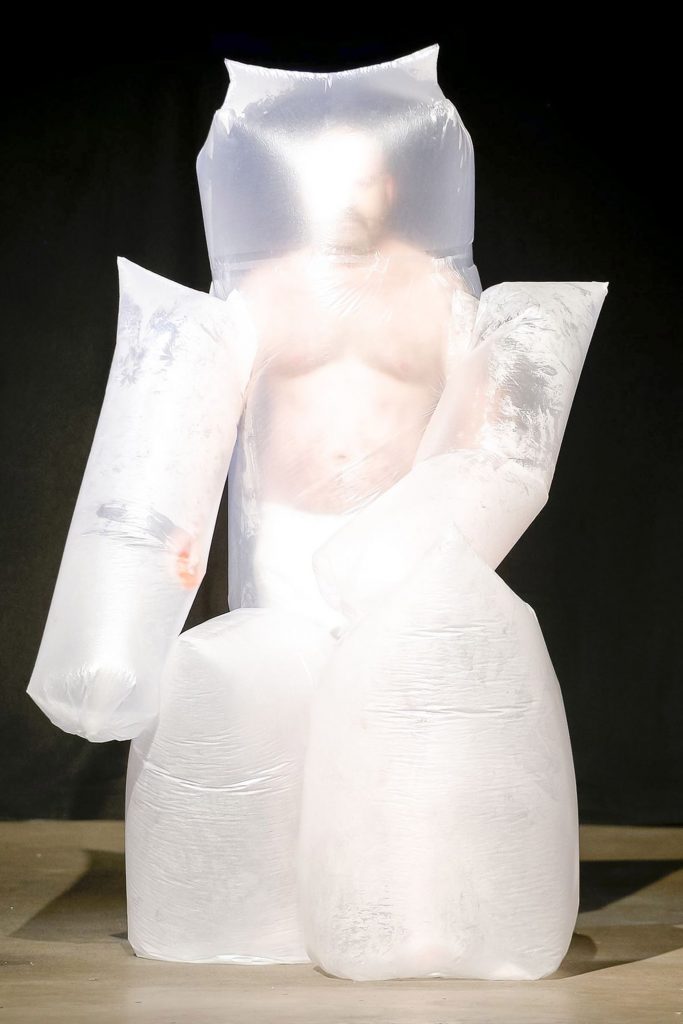
Freud-inspired collection by San Kim
Rather than using latex, which carries sexual connotations, Kim wanted to find a more “honest” and “naive” material. He cut coloured bin bags purchased from eBay into different shapes and taped them together to make his inflatable garments in bold primary hues based on the sexually-charged paintings of British pop artist Allen Jones. The bin bags were paired with denim jeans made from a squared pattern to minimise the amount of waste during production.
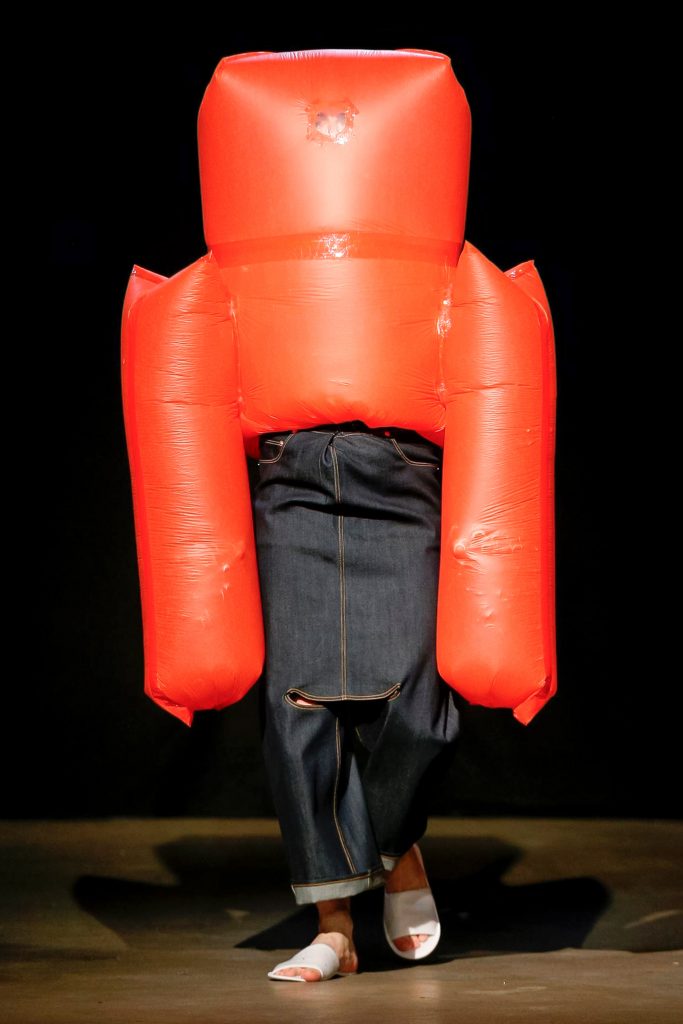
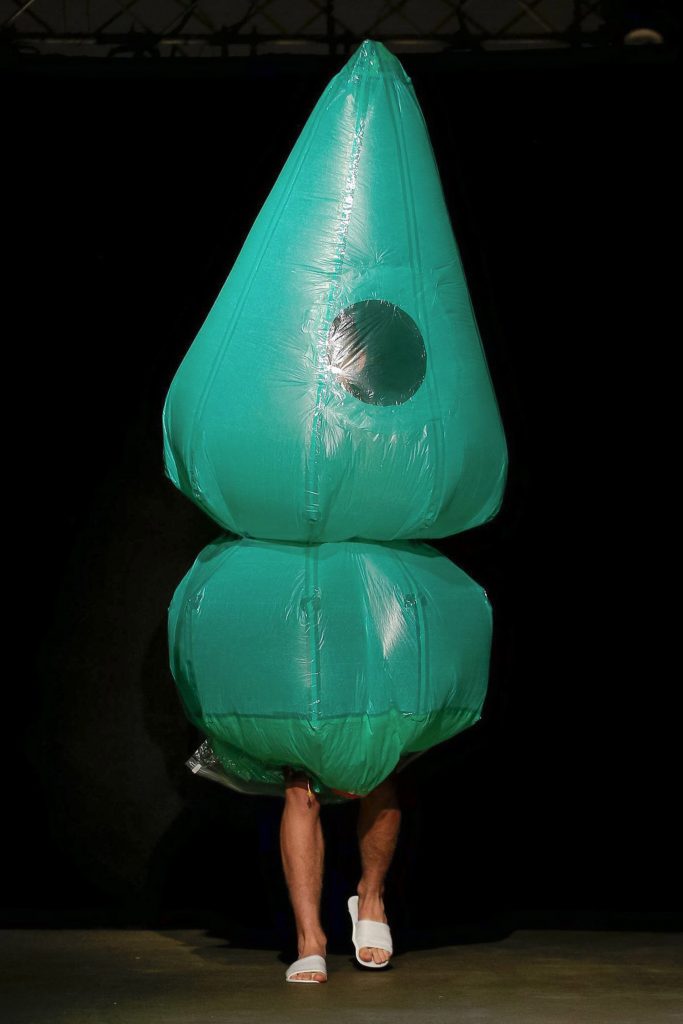
Freud-inspired collection by San Kim
The collection takes design cues from the sculptural works of American artist Paul McCarthy and particularly his Tree sculpture – a controversial 24-metre high inflatable green structure that was likened to a butt plug.
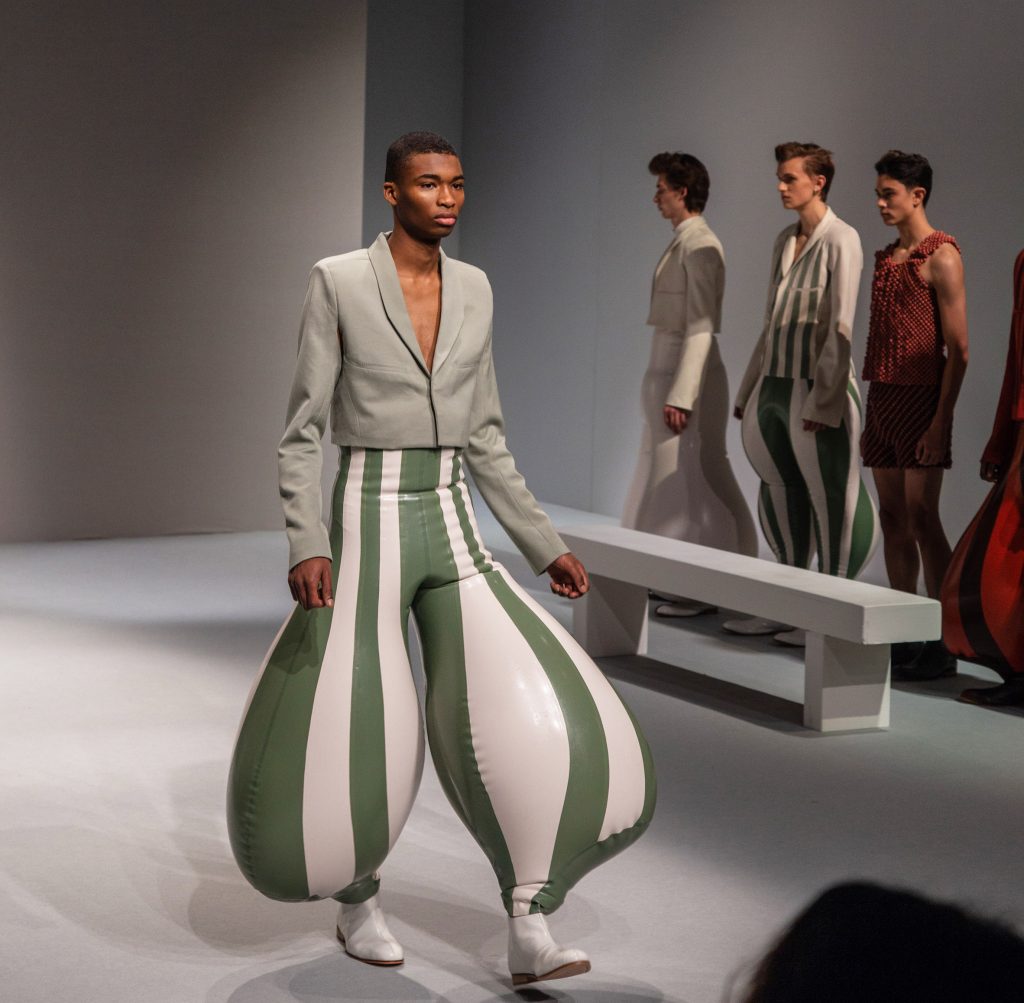
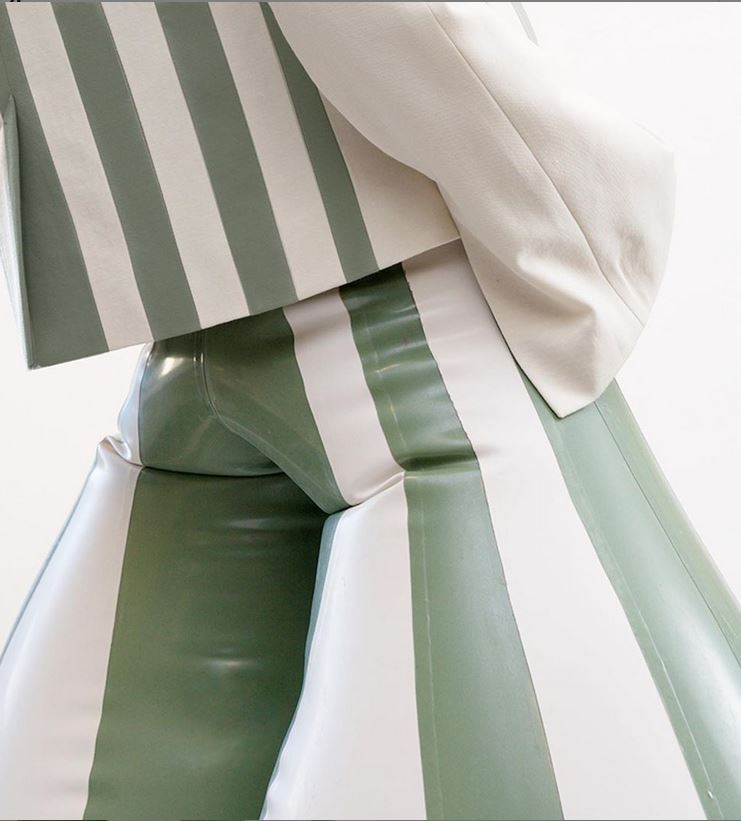
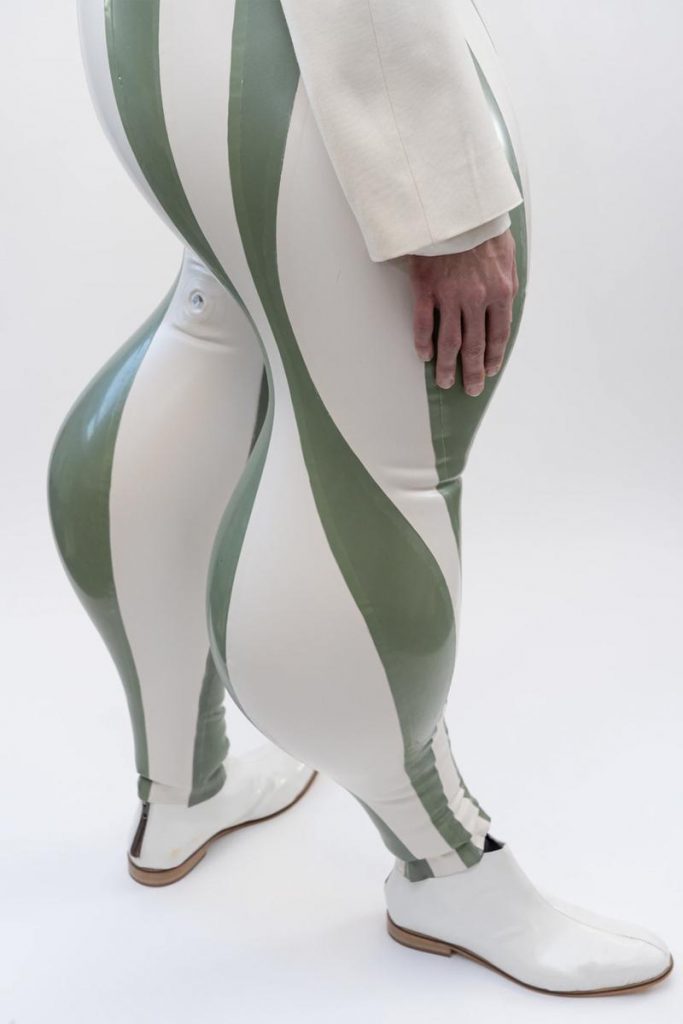
Inflatable latex collection by Harikrishnan (also header image)
For his graduate collection at the London College of Fashion, emerging fashion designer Harikrishnan has paired cropped tailored jackets with super-wide inflatable latex trousers. Designed to make people question the relevance of the proportions we see every day, the trousers fit snugly at the waist, while ballooning out to double the width of the wearer around the thighs. The exaggerated silhouette is achieved by pumping the trousers with air via a seven-millimeter wide inflation valve at the bottom.
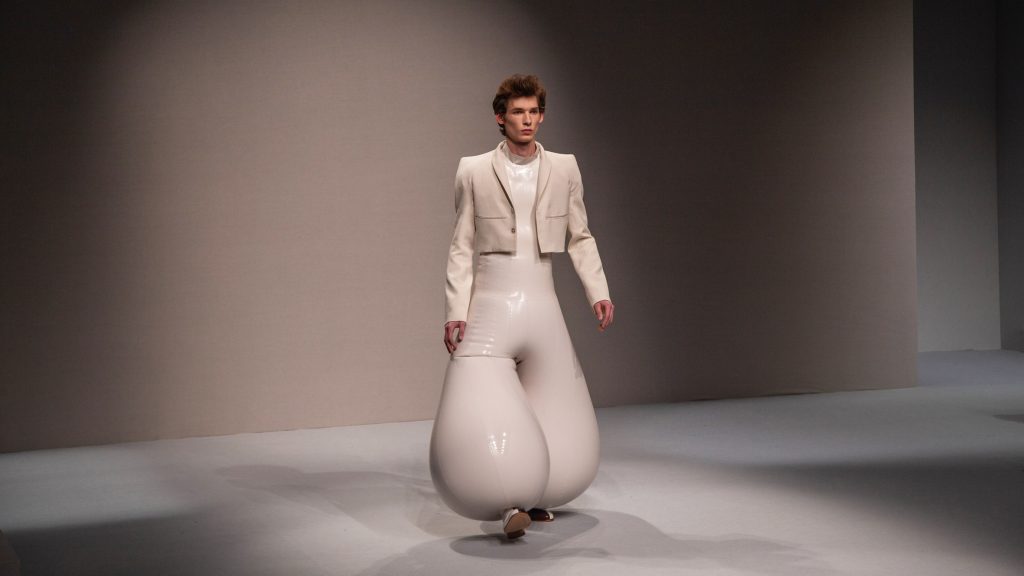
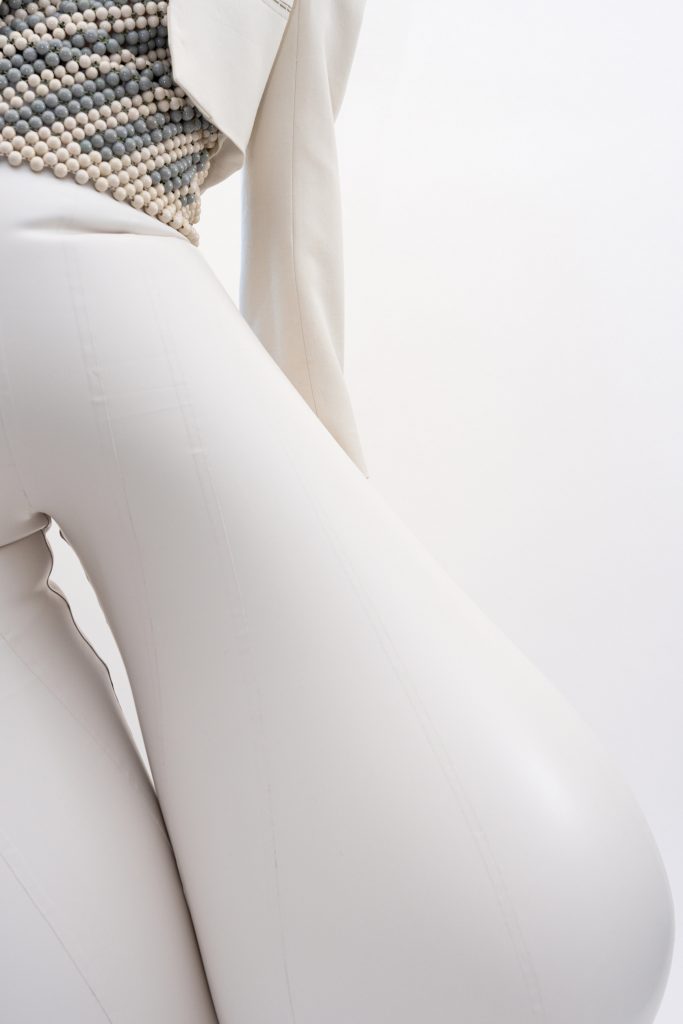
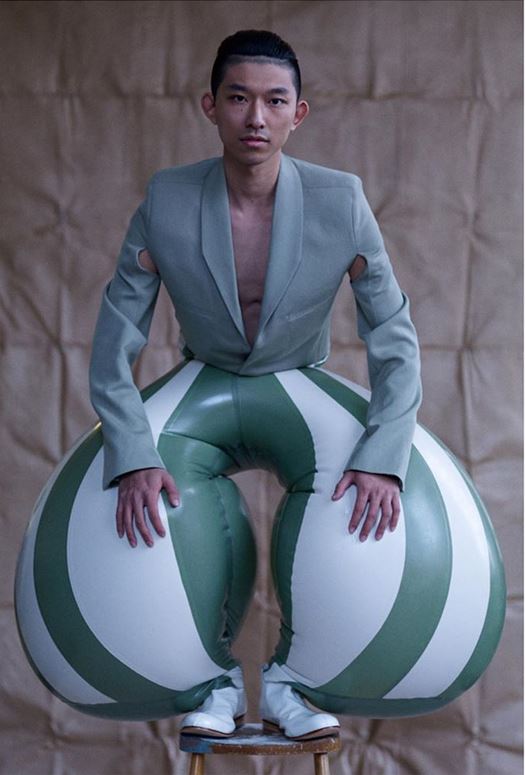
Inflatable latex collection by Harikrishnan
Harikrishnan utilizes a cutting method adopted from morphing, a technique in which images are distorted by assembling fragments of the same subject taken from different perspectives. The trousers consist of up to 30 individual latex panels that are arranged into vertical and horizontal stripes, which makes for a playful rather than fetishistic take on the material.
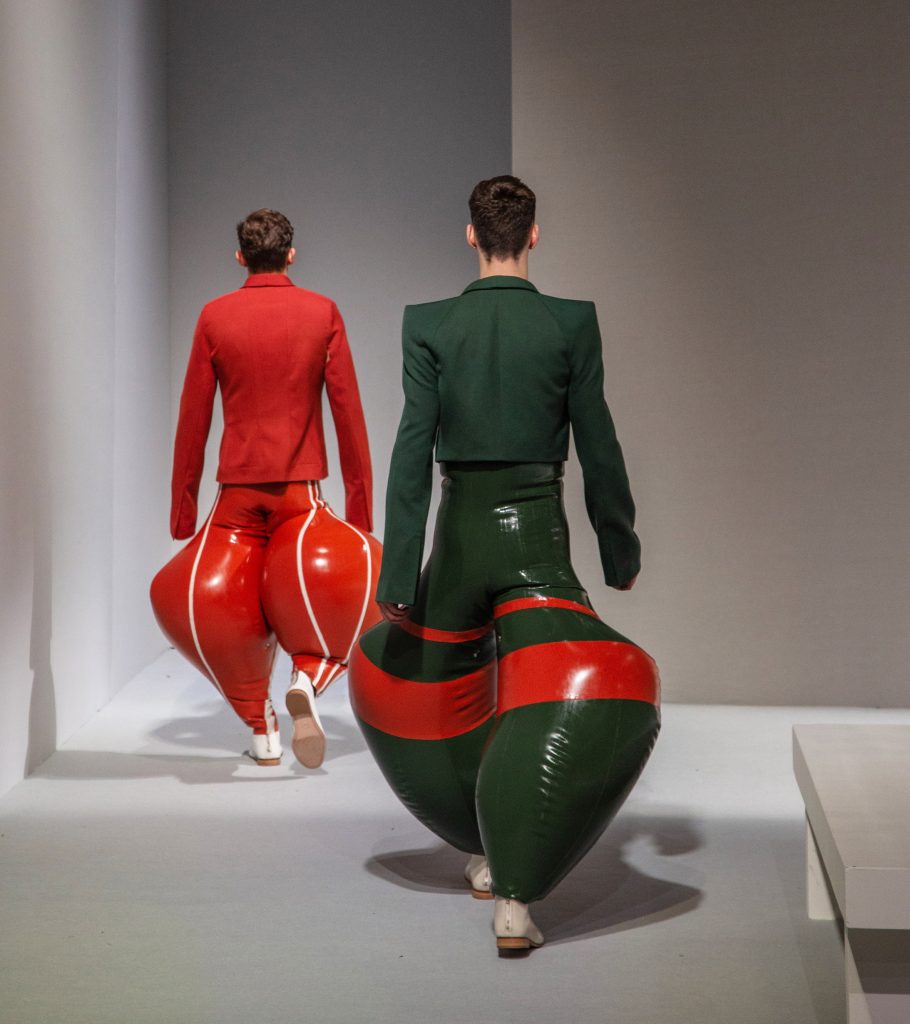
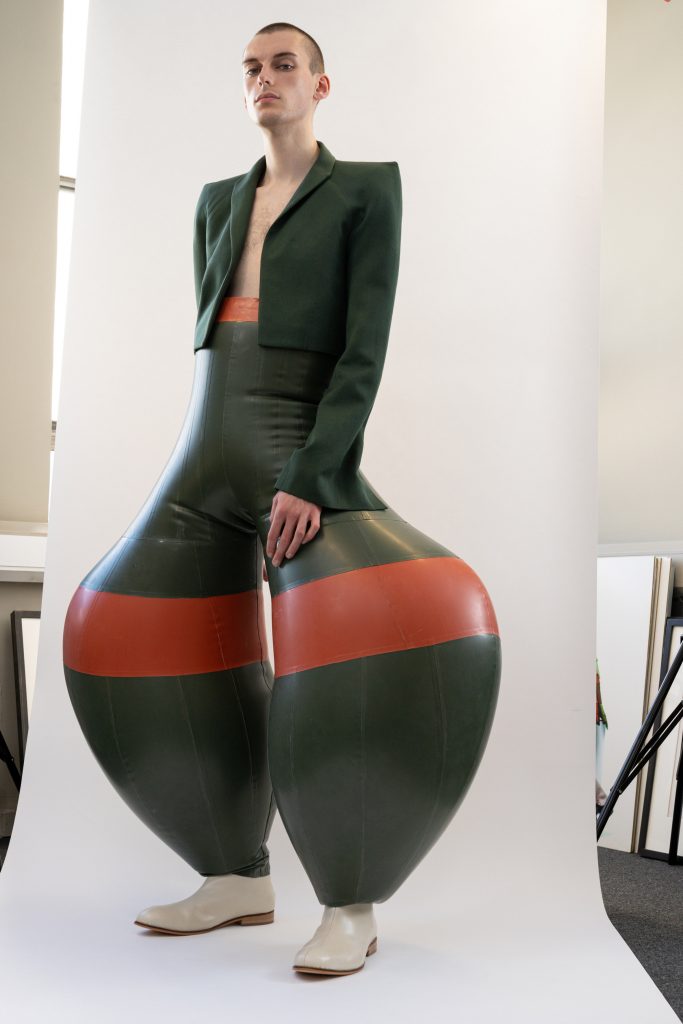
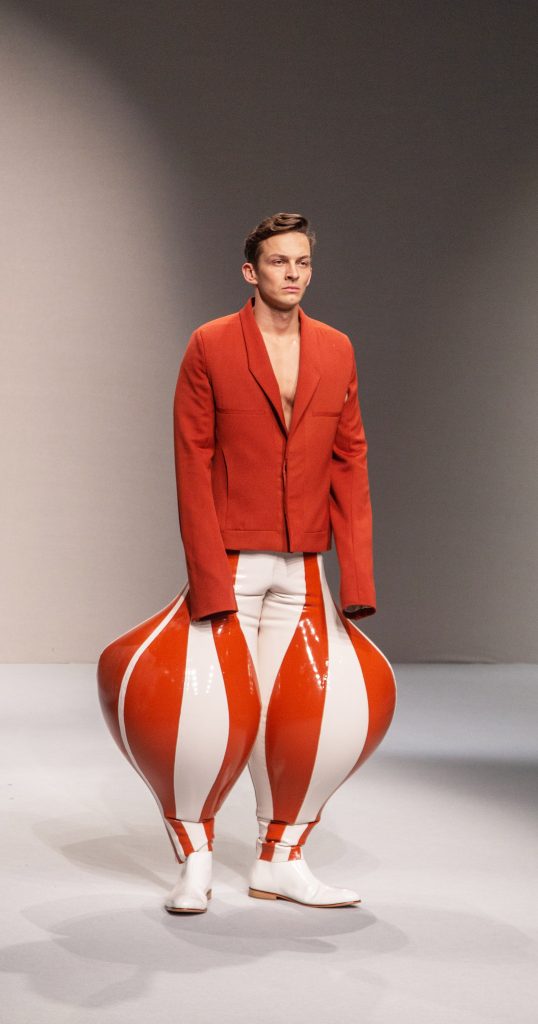
Inflatable latex collection by Harikrishnan
The final 3D shape of the trousers is visualised in a mini clay model and sliced into fragments. These are then graded and cut in latex, stuck together in various angles with high contouring to create these anatomically impossible forms.